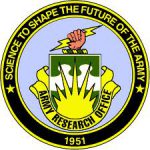HEGDÉ LABORATORY
Jay Hegdé, Principal Investigator
In our laboratory, we study how the brain works. We focus on understanding how we see, but we are also interested in studying other aspects of brain function, including the interaction between vision and the other senses. Specifically, we are interested in understanding perception as statistical inference.
The rationale behind studying perception as inference is this: The outside world is more complex, ambiguous and noisy than we generally realize. This means that the brain cannot afford to construct an internal replica of the external world we perceive. Instead, brain has to ‘make do’ with the available ambiguous information. Thus, what we think of perceiving the outside world is really the brain’s best guess as to what is out there.
Recent studies show that in order to come up with this inference about the world, the brain must evaluate the ambiguous information from the various senses, along with what it knows about the nature of the outside world and about the task at hand. Such inference is not a special case scenario, but rather is part and parcel of perception under any circumstance. In other words, there is no perception without inference. The goal of my laboratory is to study how this decision-making process works.
A good way of illustrating the centrality of inference to perception is to consider how we see in 3-D. The retinal image is a flat, 2-D image; it contains no unambiguous 3-D information whatsoever. This means that the third dimension, or depth, has to be inferred from the cues to depth (such as stereoscopic disparity, motion, occlusion, etc.) implicit in the image. Since each depth cue by itself is ambiguous, the visual system must combine ambiguous information from multiple depth cues to infer depth. Thus, there is no 3-D vision without inference. Given that there are many additional sources of ambiguity in the visual image, there is no vision, 3-D or otherwise, without inference.
Of course, this is not to say that our research is focused exclusively on 3-D vision or even just vision per se. Our work does focus on understanding how we see. But we are also actively engaged in research into other aspects of brain function and dysfunction, such as the neural mechanisms of perceptual learning, as well as the neural mechanisms of cross-modal (or multisensory) perception and cross-modal perceptual learning. Some of our research also deals with devising methods for rehabilitation of visual impairments.
In other words, we focus on understanding how we see as a way of helping us understand how the brain works. Indeed, recent computational and psycho-physical studies indicate that studying vision as inference, especially as Bayesian inference, provides a far-reaching framework for understanding not only how we see but, in good measure, how the brain works.
OUR RESEARCH INTERESTS
Our research interests include, but are not limited to, the visual and multisensory perception. We are also interested in understanding the mechanisms of visual dysfunction and developing methods for treating visual impairments.
AN INTEGRATIVE, MULTIDISCIPLINARY APPROACH TO STUDYING PERCEPTION
We are an extraordinarily integrative, multidisciplinary laboratory. In studying vision and visual dysfunction in terms of visual inference, we use a variety of advanced research methods in an integrative, synergistic fashion. The research methodologies we use include (but are not limited to):
- Multi-electrode recording and microstimulation in awake, behaving monkeys
- Functional magnetic resonance imaging (fMRI) in humans
- Psychophysics in humans and monkeys
- Electroencephalography (EEG) in humans
- Multimodal neuroimaging (i.e., concurrent EEG-fMRI) in humans
- Transcranial magnetic stimulation (TMS) in humans
- Translational/clinical research: Developing methods for the rehabilitation of visual impairments
- Computer modeling
- Image processing
- Theoretical neuroscience
Thus, our laboratory offers an excellent opportunity to learn a rare combination of diverse advanced research methodologies, while addressing many questions in the forefront of Systems Neuroscience.
DEPARTMENT OF NEUROSCIENCE AND REGENERATIVE MEDICINE (DNRM) AND JAMES AND JEAN CULVER VISION DISCOVERY INSTITUTE (CULVER VDI)
Our laboratory is affiliated with the DNRM and the Culver VDI at Augusta University (AU). VDI is an exciting new center for vision research, and BBDI is a new center for research on brain and behavior. In addition, Jay Hegdé has joint appointments in the Department of Ophthalmology of Medical College of Georgia (which is the medical school of AU) as well as the AU Graduate School.
GRANT SUPPORT
Work in our laboratory has been supported by grants from the Veterans Administration (VA), the Army Research Laboratory (ARL) / U. S. Army Research Office (ARO), the National Institutes of Health (NIH), and the National Science Foundation (NSF) to Jay Hegdé. Support is also provided by the Department of Defense (DoD), and the Army Educational Outreach Program (AEOP). We have also recently received funding from the Veterans Administration (VA) to help develop novel methods of rehabilitating Veterans with visual deficits. We are profoundly grateful for this support.







